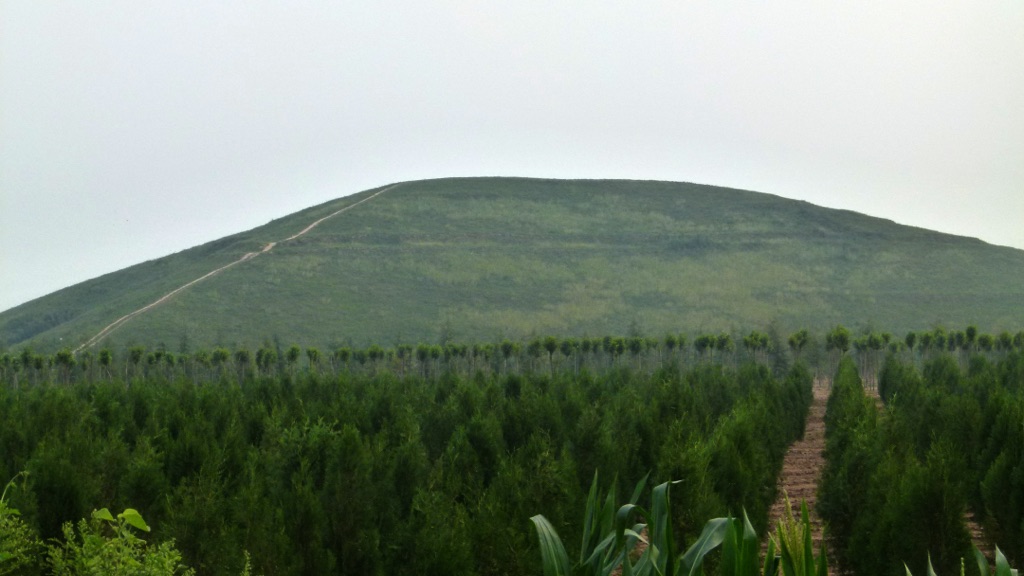Han Changling, also known as the Tomb of Prince Zhang Huai, is a significant historical site from the Han Dynasty. It is one of the tombs located in the Maoling Mausoleum area, which is the final resting place of Emperor Wu of Han. Discovered in 1968, the tomb is renowned for its well-preserved wall paintings that depict various aspects of life during the Han Dynasty. These artworks provide invaluable insights into the social structure, customs, and daily activities of that era.
Get your dose of History via Email
Historical Background of Han Changling
The Han Changling tomb was built for Prince Liu He, grandson of Emperor Wu. Liu He briefly ascended the throne but was deposed due to misconduct. The tomb’s construction dates back to the Western Han Dynasty, specifically the 1st century BC. Archaeologists unearthed the site in 1968, revealing a treasure trove of cultural relics. The discovery was a milestone, shedding light on Han Dynasty burial customs and royal life.
Prince Liu He’s tomb is part of the larger Maoling Mausoleum complex, which served as an imperial cemetery. The Maoling Mausoleum itself is the largest of the Western Han Dynasty tombs. Over the years, the site has attracted historians and archaeologists alike. They have studied the tomb’s structure, artifacts, and the stunning murals within.
Unlike other royal tombs of the era, Han Changling remained relatively intact until its discovery. This allowed for a detailed examination of its contents. The tomb’s murals are particularly famous, depicting various scenes from court life to mythology. These paintings are crucial for understanding Han Dynasty culture.
Throughout history, the tomb has not been the scene of major events. However, its discovery was a significant historical moment. It provided a snapshot of the past, frozen in time. The tomb’s excavation has contributed greatly to the study of ancient Chinese history and art.
The tomb’s preservation has been a priority since its discovery. Efforts have been made to protect the site and its artifacts from environmental damage. The Han Changling tomb stands as a testament to the grandeur of the Han Dynasty and the sophisticated level of its funerary practices.
About Han Changling
Han Changling is an underground tomb complex that showcases the architectural prowess of the Han Dynasty. The tomb’s layout follows the traditional Chinese burial customs of the time. It includes a burial mound, a passage leading to the main chamber, and auxiliary chambers. The tomb was constructed using bricks and stone, materials typical for the period.
The main chamber of Han Changling is where Prince Liu He was laid to rest. It is a vaulted space, adorned with intricate wall paintings. These murals are the tomb’s most striking feature. They depict a variety of subjects, from daily life to fantastical creatures, providing a glimpse into the prince’s life and beliefs.
The construction methods of Han Changling reflect the advanced engineering skills of the Han Dynasty. The builders employed techniques to ensure the tomb’s stability and durability. This foresight has allowed the tomb to survive for over two millennia.
Architectural highlights of the tomb include the use of colorful pigments in the murals, which have retained their vibrancy over time. The tomb’s design also incorporates elements meant to protect the deceased in the afterlife, a common practice in ancient Chinese burials.
The materials used in the tomb’s construction, such as the bricks and stones, were sourced locally. This not only reflects the resourcefulness of the builders but also provides insight into the trade and resource distribution during the Han Dynasty.
Theories and Interpretations
Several theories have emerged regarding the use and significance of Han Changling. Some scholars suggest that the tomb’s murals served a dual purpose. They were meant to honor the deceased and guide his spirit in the afterlife. The presence of mythological creatures in the paintings supports this theory.
There are mysteries surrounding the tomb, particularly regarding the life of Prince Liu He. His brief reign and subsequent demotion have led to speculation about his character and the politics of the Han court. The tomb’s artifacts have provided some clues, but much remains open to interpretation.
Historians have matched the tomb’s features to historical records to gain a better understanding of the period. This includes analyzing the inscriptions and comparing them to other known documents from the Han Dynasty.
Dating of the tomb has been carried out using various methods. Radiocarbon dating of organic materials and stylistic analysis of the murals have helped establish a timeline. These methods have confirmed the tomb’s construction during the Western Han Dynasty.
The interpretations of Han Changling’s murals and artifacts continue to evolve. As new research methods develop, scholars hope to uncover more about the tomb’s history and its occupant. The site remains a focal point for studies on ancient Chinese art and society.
At a glance
Country: China
Civilization: Han Dynasty
Age: 1st century BC
Conclusion and Sources
Reputable sources used in the creation of this article include:
- Wikipedia: https://en.wikipedia.org/wiki/Han_Changling
- World History Encyclopedia: https://www.worldhistory.org/Han_Dynasty/

